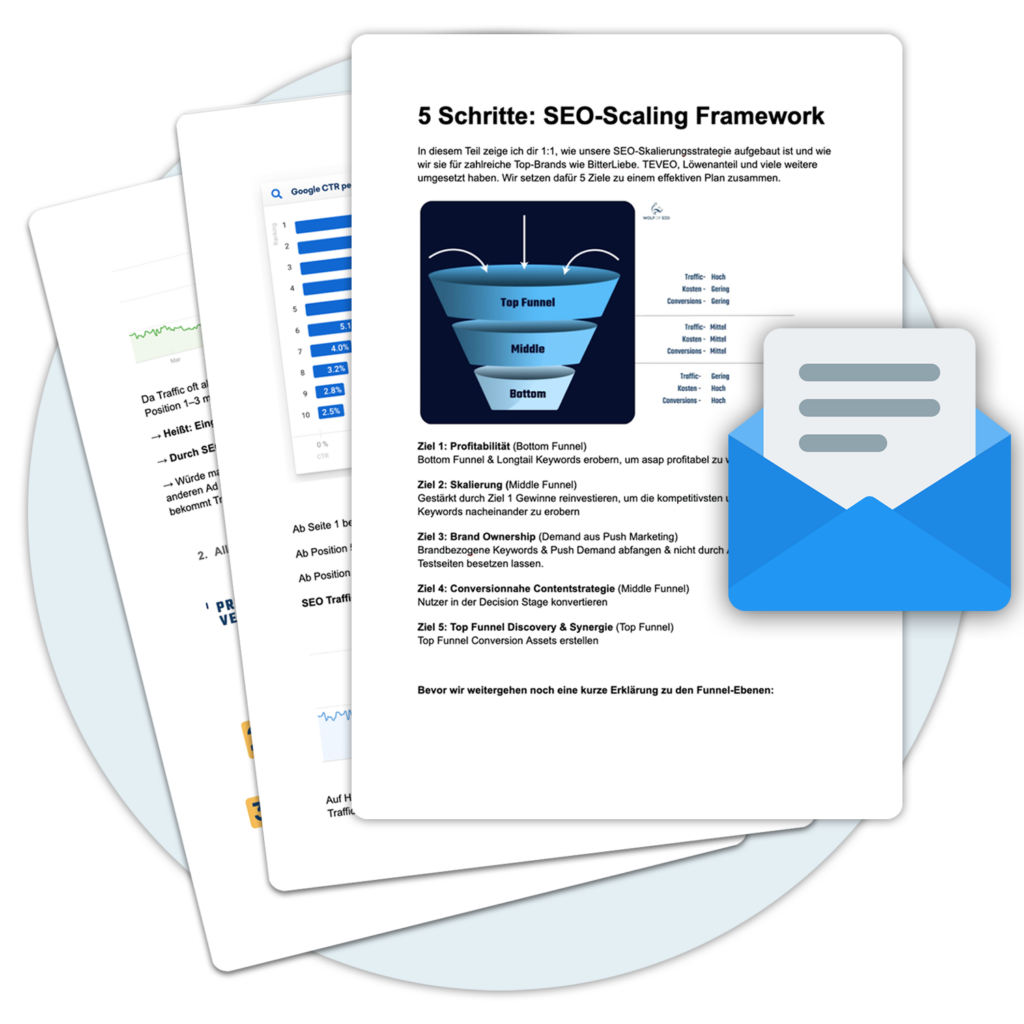Definition and meaning of Dead Links
A dead link, also Broken Link called, is a Hyperlink on a web page that no longer works and instead leads to an error or blank page. A dead link may occur if a linked page has been deleted, moved or renamed, or if a web page is inactive or no longer exists.
Dead links are very important for the user experience and SEO performance of a website. When visitors encounter a dead link, they may get frustrated and leave the page. Moreover, dead links can also affect users' trust in the website and its content.
Für die Suchmaschinenoptimierung ist es wichtig, tote Links zu vermeiden oder korrigieren, da sie das Crawlen und Indexieren der Webseite durch Suchmaschinen-Bots beeinträchtigen können. Wenn eine Webseite viele tote Links enthält, kann dies dazu führen, dass die Webseite von Suchmaschinen schlechter bewertet wird und somit im Ranking decreases. A good internal linking structure without dead links is therefore essential for a successful SEO strategy.
Causes of dead links
There are several causes of dead links that can cause a link to become unavailable or go nowhere. One common cause is that the target website has been deleted or moved without a redirect being set up. This invalidates the link and results in a 404 error message.
Ein weiterer Grund für Tote Links kann eine falsche Verlinkung sein. Wenn beispielsweise die URL falsch geschrieben oder falsch formatiert ist, kann der Link nicht richtig funktionieren. Auch das Hinzufügen von Leerzeichen oder Sonderzeichen in der URL kann zu Problemen führen.
Another cause of dead links is when the linked website has changed its content and the page being linked to no longer exists. In this case, the user receives an error message when clicking the link.
Deleting or renaming files on the linked web page can also cause the link to stop working. For example, deleting an image that is linked to from another page causes the link to go nowhere.
Effects of dead links on SEO
Dead links can have a significant impact on the SEORanking of a website have. Here are some important aspects that should be considered:
- Bad Crawling-Experience: Dead links make it difficult for crawlers to crawl the website. This can lead to certain pages not being indexed and are therefore not taken into account by search engines.
- Inferior user experience: If a user clicks on a dead link and ends up on an error page, this can lead to frustration and an overall negative impression. However, a good user experience is an important factor for good SEO.Ranking.
- Loss of Backlinks: Dead links on your own website can cause external websites to remove their links or no longer link to the affected page. This can lead to a loss of valuable Backlinks and thus lead to poorer visibility.
- Negative effects on the Ranking: Google and other search engines also evaluate the quality of a website based on dead links. If a website contains a lot of dead links, this can be interpreted as a sign of poor maintenance and updating, which has a negative impact on the ranking. Ranking can have an effect.
Dead links and crawlers
When it comes to the impact of dead links on SEO, the role of crawlers is crucial. Crawlers are automated scripts that scan websites and index their content to enable effective search engine optimization.
A dead link is a link that leads to a non-existent page. When a crawler encounters such a link, it cannot access the target resource, which results in an interruption of the Crawling-process. The result is that the affected side receives less or no indexed will.
It is important to note that crawlers have limited resources and can only crawl pages a limited number of times. If a crawler encounters dead links, it wastes its valuable time and resources. This could result in other important pages not being crawled, which could have a negative impact on the Ranking can have.
It is therefore important to avoid dead links and ensure that all links on the website point to working resources. By regularly checking and updating the links, the efficiency of the crawler can be maximized and the Ranking of the page can be improved.
How dead links affect the user experience
A dead link can significantly affect the user experience. When a user arrives at a web page and clicks on a dead link, they are either redirected to an error page (404 error page) or nothing happens. In either case, this can cause frustration and reduce the user's trust in the website.
The user experience is a crucial factor for the success of a website. A poor user experience can cause users to leave the website prematurely and not interact further. Dead links affect users' trust in the website, as they assume that the information on the website is not up-to-date or trustworthy.
Furthermore, dead links can also make it difficult to navigate a web page. When users encounter dead links on a web page, they may have difficulty finding the information they are looking for. This can lead to a frustrating and time-consuming user experience.
Dead links and their influence on Google ranking
Dead links can have a significant impact on the Google rankings.Ranking have. If your website contains many dead links, this can be interpreted by Google as a sign of low quality and lack of maintenance. Google prefers websites that are regularly updated and offer a good user experience.
If Google finds a lot of dead links on your website, this can lead to your website appearing in the Ranking is downgraded. This means that it appears significantly lower in the search results and receives less visibility. This downgrading can have a negative impact on the Traffic and the number of visitors to your website.
It is important to note that dead internal links on your website are less serious than dead external links, since you can correct the internal link yourself. However, external dead links, especially from high quality websites, can reduce the search engines' trust in your website.
Another effect of dead links on the Google-Ranking is the deterioration of the linkjuice. If a page on your website contains many dead links, the linkjuice will not be passed on and this can affect the search engine optimization (SEO) of your website. It is therefore important to regularly check and correct dead links in order to achieve optimal performance in search results.
Dead link detection
There are several ways to detect dead links on a website. Here are some methods that can help you:
- Manual testing: Regularly check the links on your website by manually clicking on them and verifying that they are working properly. However, this can be time-consuming, especially if you have a large website with many links.
- Link Checker Tools: There are many online tools that can automatically check all the links on your website and show you if they are dead links. Some popular tools are W3C Link Checker or Dead Link Checker.
- Google Search Console: Log in to the Google Search Console and check the "Crawl errors" section. Dead links that have been recognized by Google are displayed here.
It is important to regularly check and correct dead links as they have a negative impact on user experience and SEO.Ranking of your website.
Dead Link Identification Tools
To identify dead links on a website, there are various tools that can help you solve the problem quickly and efficiently. These tools allow you to regularly check your website for dead links and thus improve the user experience and your Google rankings.Ranking to improve.
Some of the most popular tools for identifying dead links are:
- Xenu's Link Sleuth: This free tool can be used to find dead links on your website. It searches all links on your website and gives you a detailed list of dead links.
- Google Search Console: Google Search Console offers a feature to check dead links on your website. Not only the dead links are listed, but also information about the affected pages.
- Screaming Frog: This tool allows you to check your website for various SEO issues, including dead links. It provides detailed information about the dead links and allows you to fix them effectively.
When using these tools, it is important to perform regular checks to identify and fix dead links early. This way you can make sure that your website works smoothly and provides a positive user experience.
Self diagnosis of dead links
To identify and fix dead links on your website, there are several methods you can do yourself. Here are some steps that can help you do it:
- Regularly check your website for broken links. Go through all pages and click on each link to make sure it still works.
- Use link checking tools like Xenu's Link Sleuth or Screaming Frog SEO Spider. These tools can automatically scan all the links on your website and show you if they are still active or not.
- Check your website statistics and see if there are any pages that have a high bounce rate. If a page contains a lot of dead links, this can cause visitors to leave the page immediately.
It is important to fix dead links as quickly as possible to avoid negative effects on your SEO.Ranking and the user experience. If a page contains a dead link, it can affect visitors' trust in your website, as they may have the impression that your website is outdated or neglected.
By following the steps above to self-diagnose dead links, you can identify and fix potential problems early on to improve the user experience on your website and boost your SEO.Ranking increase.
Correct and avoid dead links
There are several methods to correct dead links and avoid them in the future. Here are some tips that can help you with that:
- Periodic Review: It is important to regularly check your website for dead links. Use tools to identify dead links or check them manually.
- 301-Weiterleitung: If you remove or rename a page, redirect the Backlinks to a relevant page with a 301 redirect. This keeps the Backlinks preserved and do not lose value.
- Updating links: Check all internal and external links on your website regularly. If you find that a linked content is no longer available, update the link or remove it.
- Update Robots.txt file: Make sure that dead links are not crawled by search engines by excluding them in the Robots.txt file.
By regularly checking and updating dead links, you can ensure that your website provides a good user experience and doesn't have a negative impact on your Google rankings.Ranking has.
« Back to Glossary Index






